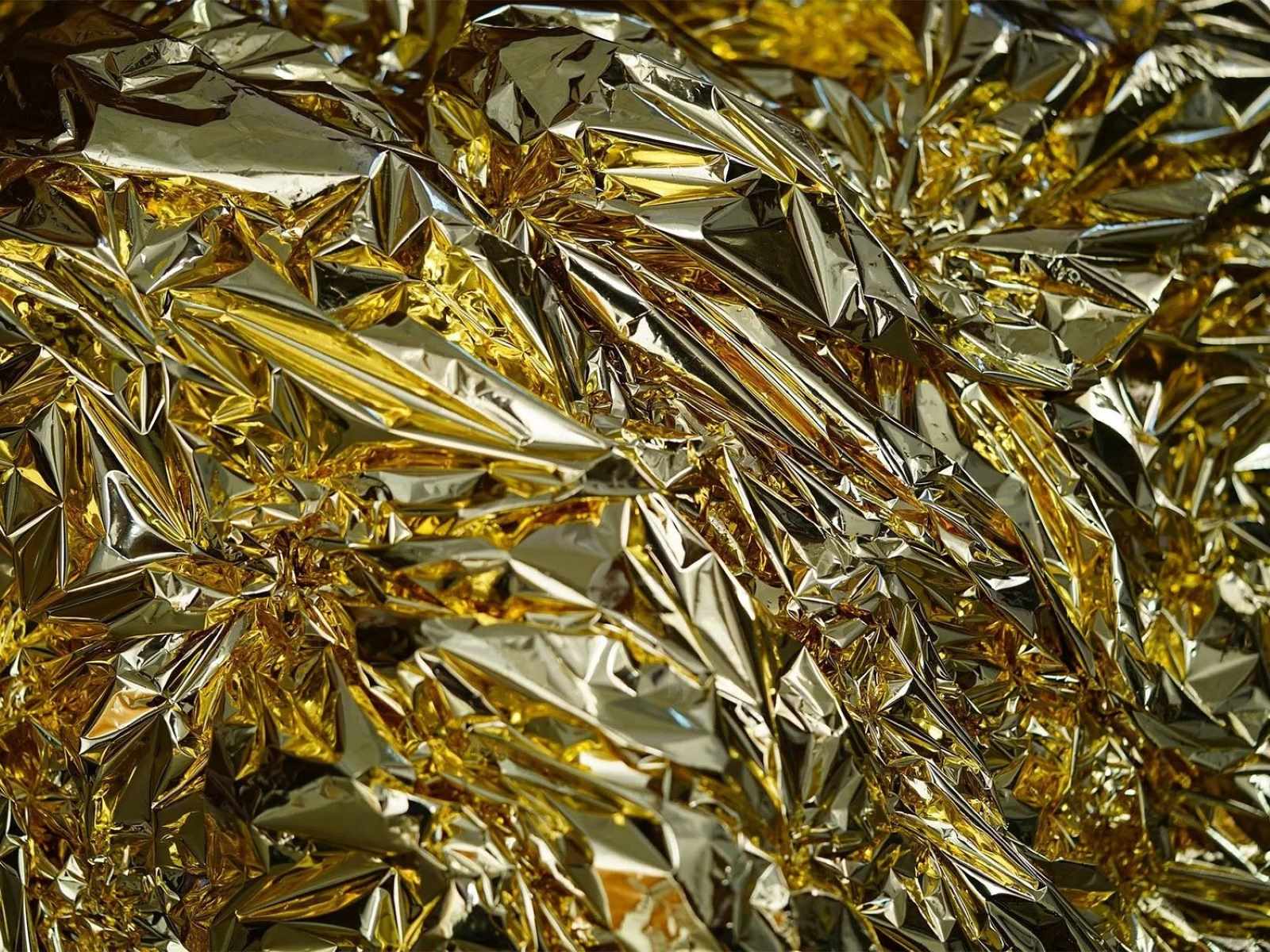
Colored gold isn't just about yellow anymore. Have you ever wondered how gold can come in shades like white, rose, or even green? Colored gold is created by mixing pure gold with other metals, resulting in a variety of hues. For example, white gold is made by blending gold with metals like palladium or nickel, giving it a silvery appearance. Rose gold gets its pinkish tint from a mix of gold and copper. These unique colors make jewelry pieces stand out and offer more options for personal expression. Ready to dive into 40 fascinating facts about colored gold? Let's get started!
Key Takeaways:
- Colored gold is created by mixing pure gold with other metals, resulting in stunning hues like rose, white, and green. Its unique properties make it popular in jewelry, technology, and even medical devices.
- Different cultures have used colored gold for centuries, each with its own meanings and traditions. From symbolizing prosperity in China to being a traditional gift for brides in the Middle East, colored gold holds significant cultural significance worldwide.
What is Colored Gold?
Colored gold isn't just yellow. It's a fascinating blend of metals that create stunning hues. Let's dive into some intriguing facts about this unique type of gold.
-
Colored gold is created by mixing pure gold with other metals. This process is called alloying.
-
Pure gold is 24 karats. When mixed with other metals, the karat value decreases.
-
Rose gold gets its pinkish hue from copper. The more copper, the redder the gold.
-
White gold is made by alloying gold with metals like palladium or nickel. It often has a rhodium plating for extra shine.
-
Green gold is created by adding silver. Sometimes, cadmium is used, but it's less common due to toxicity concerns.
History of Colored Gold
Colored gold has a rich history, dating back centuries. Different cultures have used various alloys to create beautiful jewelry and artifacts.
-
Ancient Egyptians used colored gold in their jewelry. They often mixed gold with silver to create electrum.
-
Romans were known for their use of rose gold. They called it "red gold."
-
Medieval Europe saw the use of green gold in religious artifacts. It symbolized fertility and growth.
-
Victorian Era jewelry often featured rose gold. It was popular for its romantic hue.
-
Art Deco period brought white gold into the spotlight. It was a fashionable alternative to platinum.
Modern Uses of Colored Gold
Today, colored gold is used in various industries, from jewelry to technology. Its versatility makes it a popular choice.
-
Jewelry designers love colored gold for its unique look. It allows for creative and personalized designs.
-
Watches often feature rose or white gold. These metals add a touch of elegance and luxury.
-
Electronics use gold for its conductivity. Colored gold can be found in some high-end gadgets.
-
Medical devices sometimes incorporate gold. Its biocompatibility makes it ideal for implants.
-
Awards and trophies are often made with colored gold. It adds prestige and value.
How is Colored Gold Made?
The process of creating colored gold involves precise measurements and techniques. Each color requires a different combination of metals.
-
Alloying is the key to making colored gold. By mixing gold with other metals, different hues are achieved.
-
Copper is used to create rose gold. The more copper, the deeper the red color.
-
Nickel or palladium is used for white gold. These metals help to bleach the yellow color of gold.
-
Silver is added to gold to create green gold. This combination gives a subtle greenish tint.
-
Blue gold is made by adding indium or gallium. It's a rare and unique color.
Care and Maintenance of Colored Gold
Colored gold requires special care to maintain its beauty. Proper maintenance ensures it stays looking its best.
-
Avoid harsh chemicals when cleaning colored gold. They can damage the metal and affect its color.
-
Use a soft cloth to polish colored gold. This helps to maintain its shine without scratching.
-
Store colored gold separately from other jewelry. This prevents scratches and damage.
-
Regular inspections by a jeweler can help maintain colored gold. They can check for wear and tear.
-
Rhodium plating on white gold may need reapplication. This keeps it looking bright and shiny.
Interesting Facts About Colored Gold
Colored gold has some surprising and fun facts. These tidbits add to its allure and mystique.
-
Rose gold is also known as pink gold or red gold. The name depends on the copper content.
-
White gold was developed as a substitute for platinum. It became popular during World War II.
-
Green gold is sometimes called electrum. This term dates back to ancient times.
-
Blue gold is one of the rarest types. It's not commonly used in jewelry.
-
Purple gold is created by adding aluminum. It's brittle and often used for inlays.
Cultural Significance of Colored Gold
Different cultures have their own meanings and uses for colored gold. These traditions add depth to its beauty.
-
In China, red gold symbolizes prosperity and good fortune. It's often used in wedding jewelry.
-
In India, gold of all colors is highly valued. It's a symbol of wealth and status.
-
In Russia, rose gold is known as Russian gold. It has been popular since the 19th century.
-
In the Middle East, gold is a traditional gift for brides. Colored gold adds variety to bridal jewelry.
-
In Western cultures, white gold is often chosen for engagement rings. It's a modern alternative to yellow gold.
Economic Impact of Colored Gold
Colored gold has a significant impact on the economy. Its production and sale contribute to various industries.
-
Jewelry industry relies heavily on colored gold. It drives sales and innovation.
-
Mining industry benefits from the demand for gold. Colored gold increases the need for different metals.
-
Technology sector uses gold for its properties. Colored gold adds value to high-end products.
-
Investment in gold is common. Colored gold offers a unique option for investors.
-
Global trade of gold includes colored gold. It affects markets and economies worldwide.
The Fascinating World of Colored Gold
Colored gold isn't just about aesthetics; it's a blend of science, history, and art. From rose gold's romantic hue to white gold's sleek appearance, each type tells a unique story. These alloys, mixed with metals like copper, silver, and palladium, create stunning variations that have captivated people for centuries.
Understanding the differences between these types helps in making informed choices, whether you're buying jewelry or just curious. Colored gold's versatility makes it a favorite in fashion and design, offering something for everyone.
Next time you see a piece of colored gold, remember the intricate process and rich history behind it. This knowledge not only enhances appreciation but also adds a layer of depth to your understanding of this beautiful metal. So, whether you're a collector or an enthusiast, colored gold has something special to offer.
Frequently Asked Questions
Was this page helpful?
Our commitment to delivering trustworthy and engaging content is at the heart of what we do. Each fact on our site is contributed by real users like you, bringing a wealth of diverse insights and information. To ensure the highest standards of accuracy and reliability, our dedicated editors meticulously review each submission. This process guarantees that the facts we share are not only fascinating but also credible. Trust in our commitment to quality and authenticity as you explore and learn with us.


